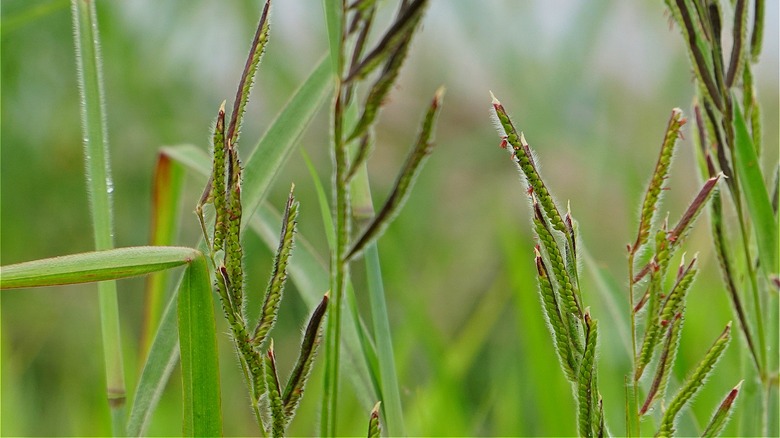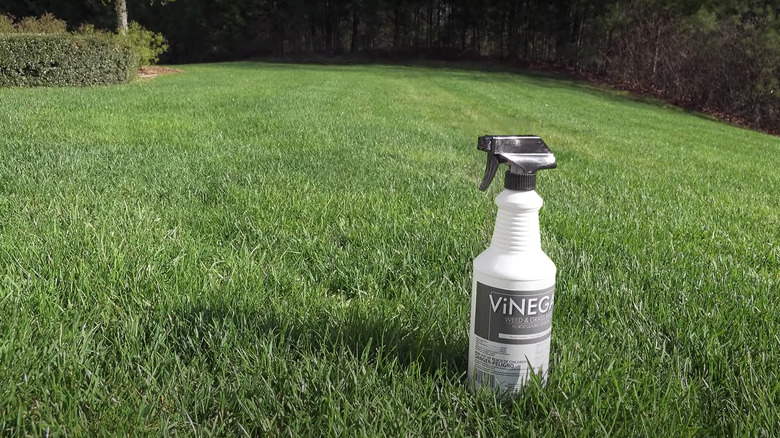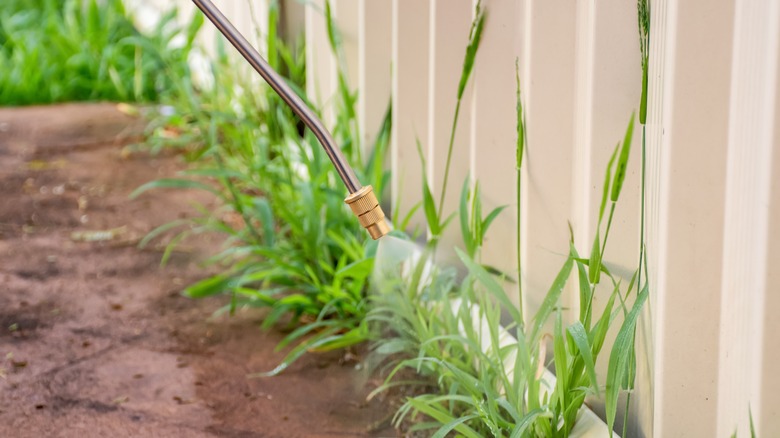Get Rid Of The Stubborn Dallisgrass In Your Yard With These Tips
If you've noticed a few clumps of wide-bladed weeds containing three to five seed stalks in your yard, then you're likely dealing with dallisgrass. This weed is typically found in Southern portions of the United States but can also grow in other areas. What makes them particularly frustrating is their ability to adapt their height to avoid being cut down by a lawn mower. Dallisgrass also grows very quickly compared to other types of turfgrass.
Those of you currently dealing with clumps of dallisgrass in your yard are likely having difficulty getting rid of them. However, if the weed is new and hasn't had time to produce seeds, simply pulling or digging it out could be your solution. This technique is especially effortless if the soil is wet, allowing the roots to slip out with ease. But if your dallisgrass problem is more integrated, there are other tactics you can use in order to eliminate them.
Natural weed-killing solution
Before we jump into the common chemical solutions, we want to let you in on the effectiveness of vinegar, which can be used as a natural treatment for dallisgrass removal. Due to its acidic nature, it's capable of killing this pesky weed. However, the type of vinegar you use depends on the amount of dallisgrass you're dealing with. For instance, those dealing with small spots of dallisgrass can use white vinegar that has a 5% acetic acid concentration, while those dealing with larger portions may need to use something stronger, such as a horticultural vinegar with 30% acetic acid concentration.
Now, if you're someone who has a small dallisgrass problem, you'll want to kill the weed without harming your surrounding plants and grass. For protective measures, it's important to cover them with a tarp before spraying the dallisgrass with white vinegar. Once 24 hours have passed, the weed should be dead. If not, you can repeat the process. While doing this, it's important to also wear gloves to avoid skin irritation.
Postemergence herbicide
Most of you are likely dealing with dallisgrass that has germinated. If so, you'll need to you a postemergence herbicide. However, the product you purchase and the steps you take are dependent on whether or not you're dealing with a warm-season lawn or a cool-season lawn. A warm-season lawn is typically green in late spring and brown by October, whereas cool-season lawns become green by mid-spring and turn brown by late autumn.
Those with warm-season lawns will need to apply their first coat of postemergence herbicide in the fall when temperatures are around 70 degrees. After about four to six weeks, you can apply your second coat. Then, your last application can be done in mid to late spring. Additionally, be sure to spray directly onto the weed rather than spraying it all over to avoid damaging the rest of your grass. Those with cool-season lawns will need to apply their postemergence herbicide a few times in the months of spring and fall, except during hotter summer months.



